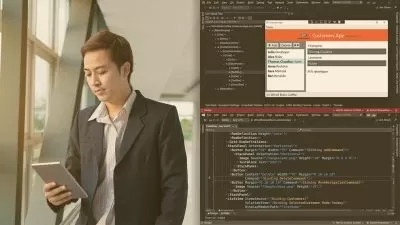Building Configurable Applications Using .NET 5 Generic Host
Matt Tester
1:53:32
Description
Hard-coded paths, URLs, and other settings make your applications inflexible and difficult to change. This course will teach you how to use the .NET Generic Host and Configuration APIs in your applications, allowing them to update without recompiling.
What You'll Learn?
Applications and services need to be flexible, using different configuration settings depending on whether they are running in development or production, without having to recompile.
In this course, Building Configurable Applications Using .NET Generic Host, you’ll learn how to implement applications so they can be easily configured leveraging the .NET Class Libraries.
First, you’ll explore how the .NET Configuration API simplifies working with configuration from files and other sources.
Next, you’ll discover how to expose your configuration values throughout your applications efficiently using dependency injection.
Finally, you’ll learn some best practices on how to make your reusable code libraries configurable too.
When you’re finished with this course, you’ll have the skills and knowledge of developing with the .NET Generic Host and Configuration APIs needed to make your applications and services configurable for each target environment.
More details
User Reviews
Rating
Matt Tester
Instructor's Courses
Pluralsight
View courses Pluralsight- language english
- Training sessions 38
- duration 1:53:32
- level average
- Release Date 2023/12/14











